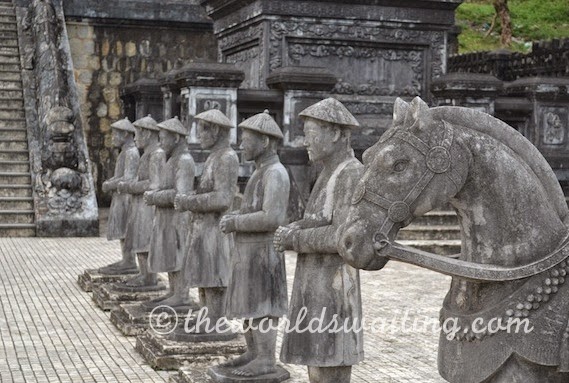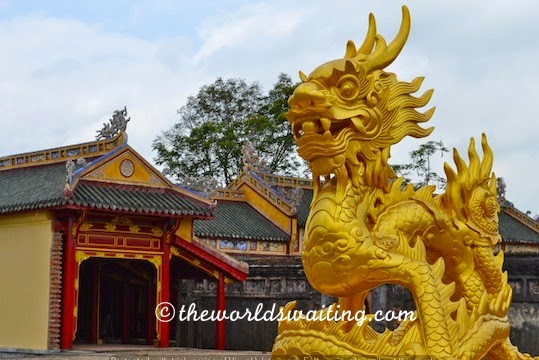Vietnam’s Tomb of Khai Dinh, a tomb with a view
Being the home of Vietnam’s imperial history, Hue boasts several impressive tombs. Sounds a bit morbid, but if you haven’t seen an Asian tomb, you should. They are very impressive places! Emperor Khai Dinh was the penultimate emperor of the Nguyen Dynasty, reigning from 1916 – 1925, and he was the last emperor to be buried in a royal tomb. A tomb with a view His tomb is quite distinct from other royal tombs. Firstly, it is significantly smaller than others. Its construction, three levels built into a steep hillside, makes it feel more like a monument than a place of quite reflection. 127 steps make exploring it quite a…
Vietnam’s Thien Mu, a Temple with a Political History
On the north bank of the beautiful Perfume River in Hue, the Thien Mu Pagoda is a place of peace and reflection. Historically however, the temple was closely associated with politics, predominantly the opposition to Vietnam’s oppressive regime during the 1950s. This edgy and unique characteristic of Thien Mu makes it fascinating to visit. The temple is dedicated to Buddha and was originally constructed in the 1840s, but most recently restored in 1953. It is a working temple with meditation halls, drum towers and several shrines. It is also home to a sangha of Buddhist monks, whose presence was only indicated by several trays of chillies left to dry on…
Hue’s Impressive Imperial Citadel
Little did we know that visiting Hue’s old fortified city, known as the citadel, was going to involve so much guesswork. Tragically, not much of Vietnam’s one-time royal domain and capital city remains in tact today, but that makes it all the more interesting to explore. Home to the Nguyen dynasty, at the time of construction, Hue’s citadel would have been a city fit for a king. It covered about five square kilometers on the north bank of the Perfume River and featured an imperial enclosure and the Forbidden Purple City where only emperors, concubines and invited guests were permitted. There were also temple compounds and residences. However, what visitors…


